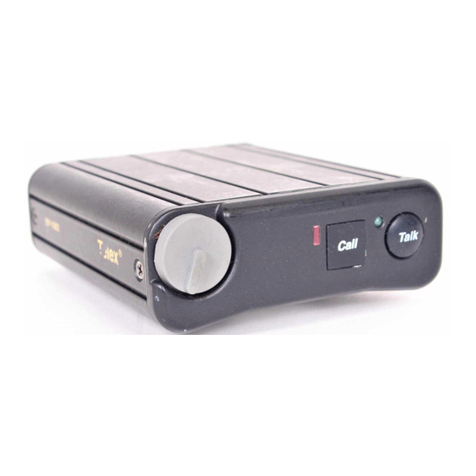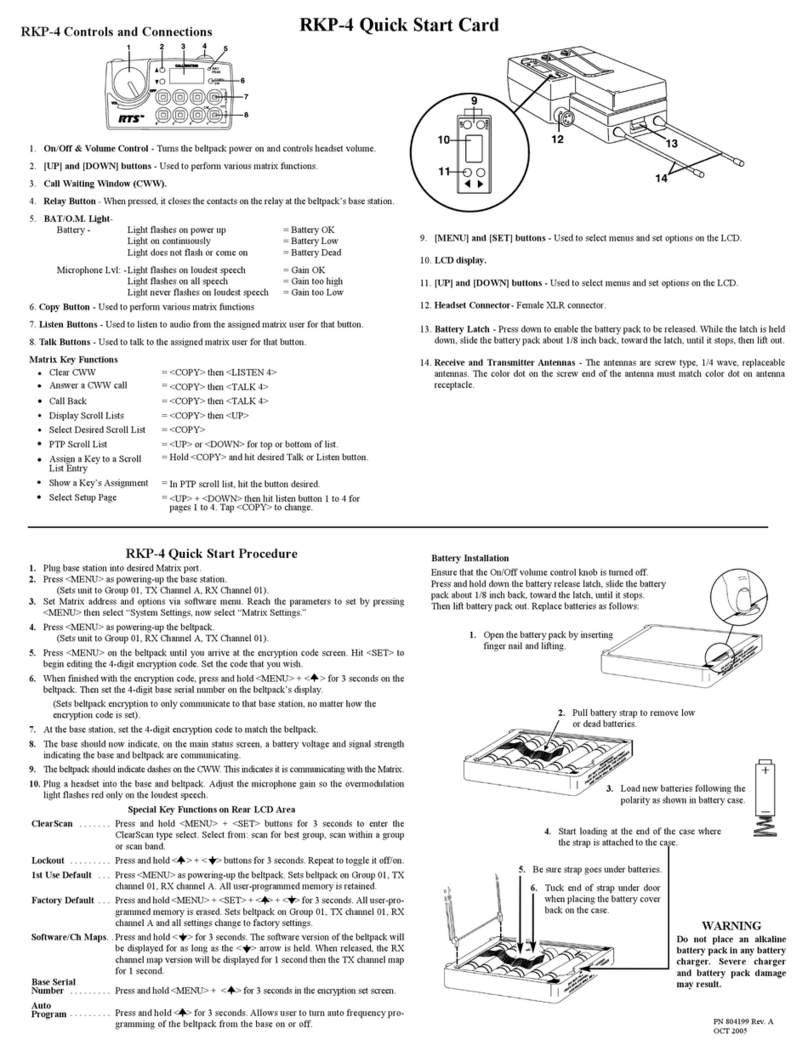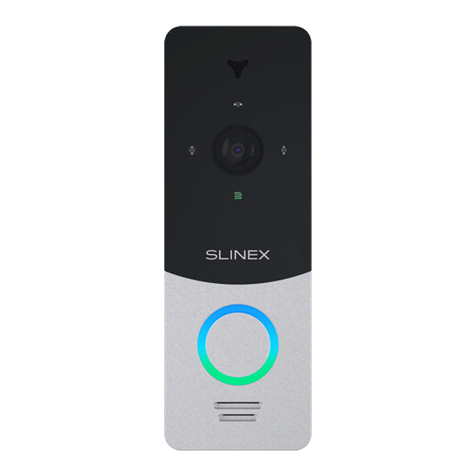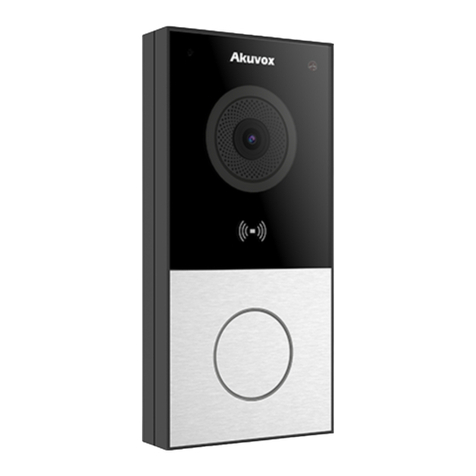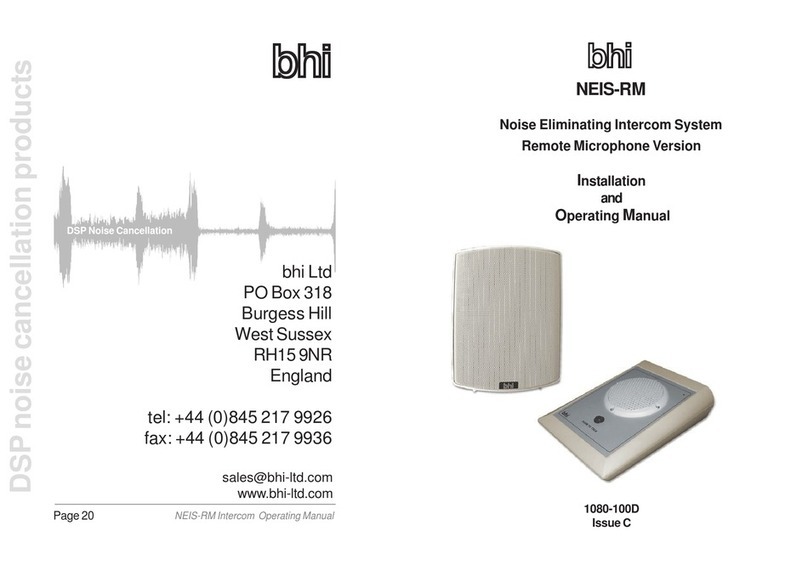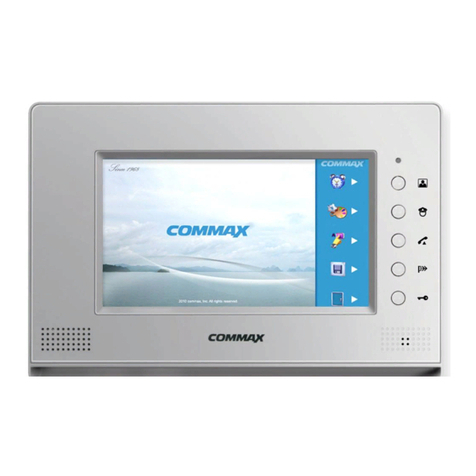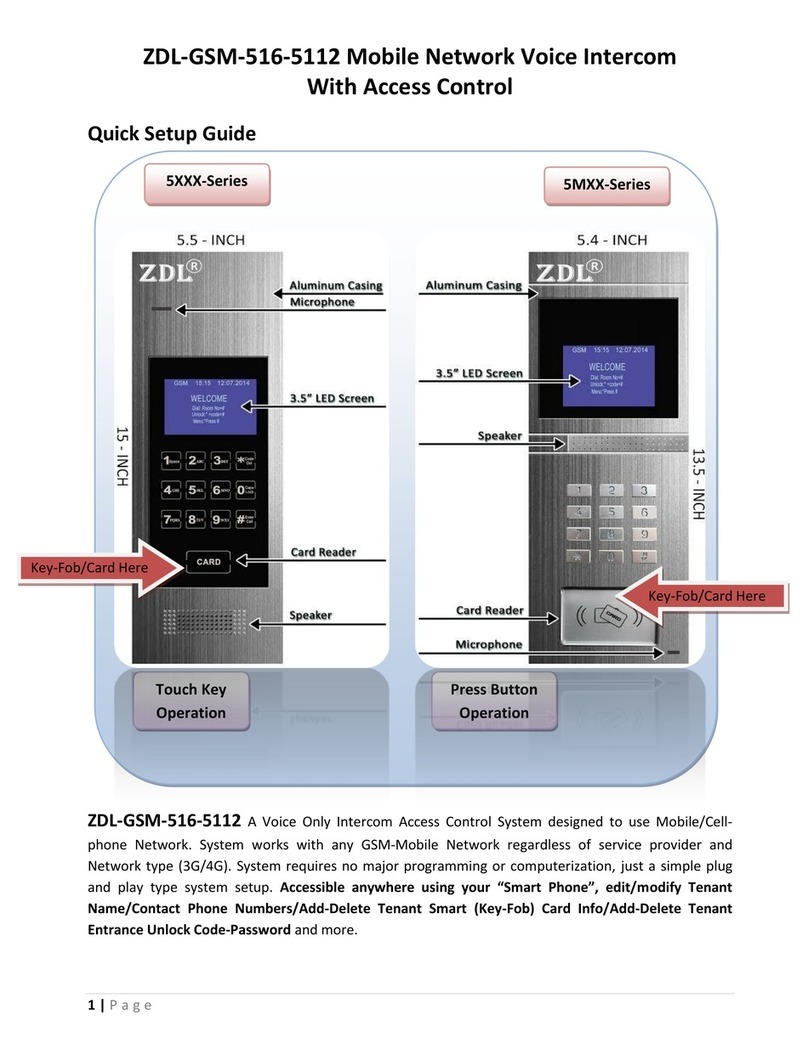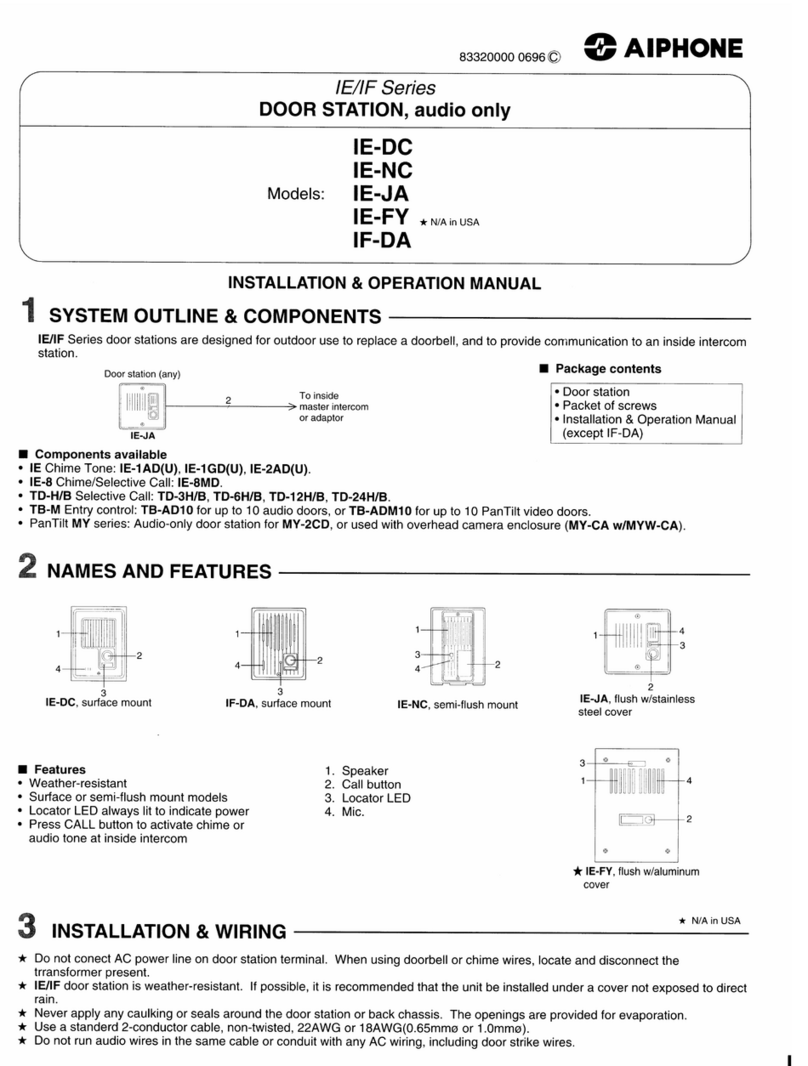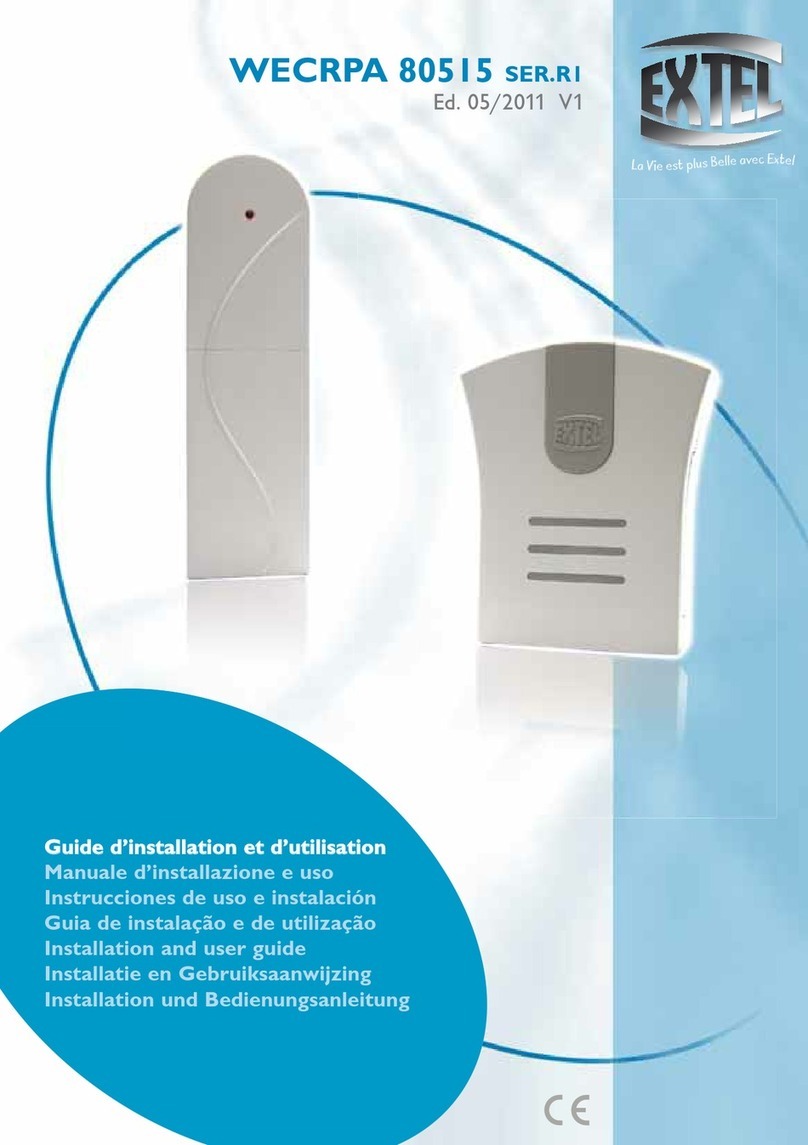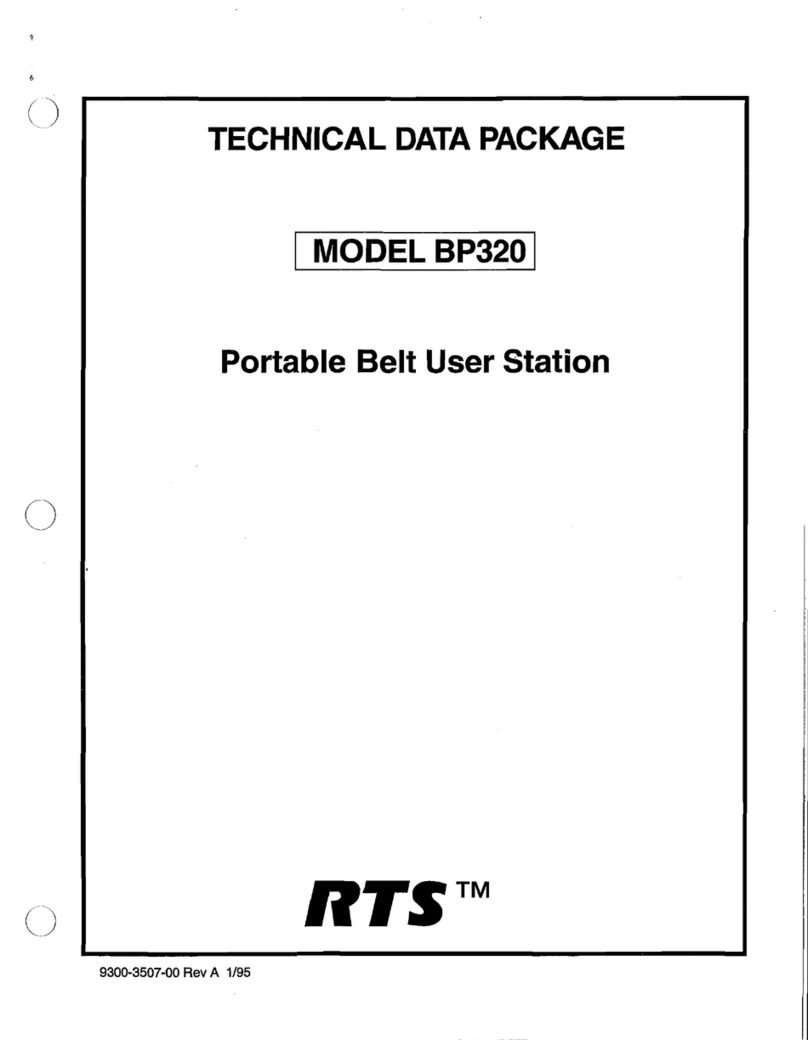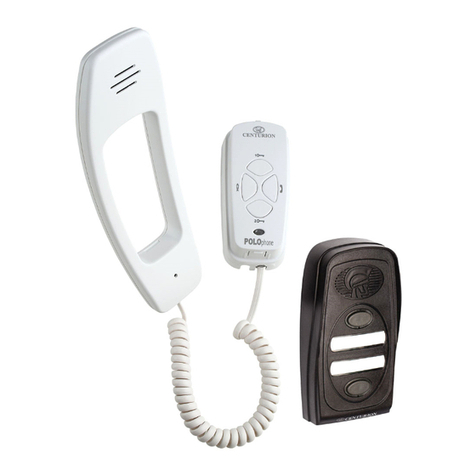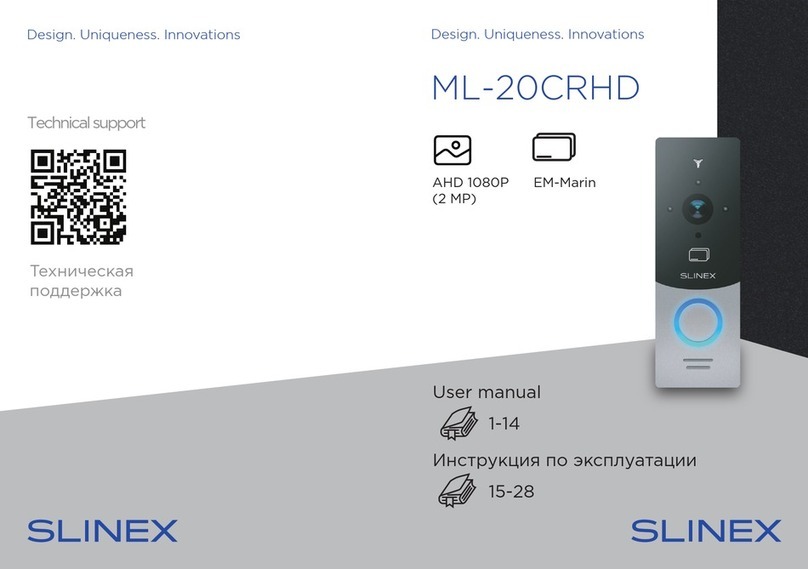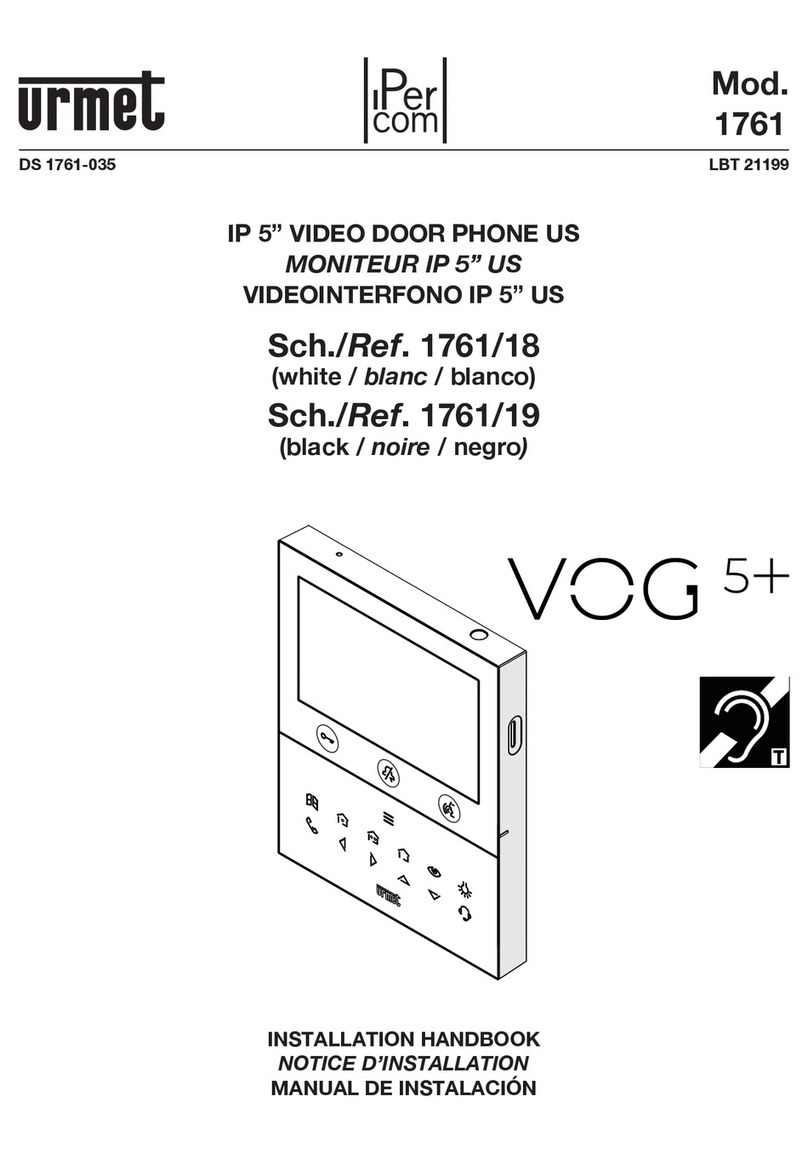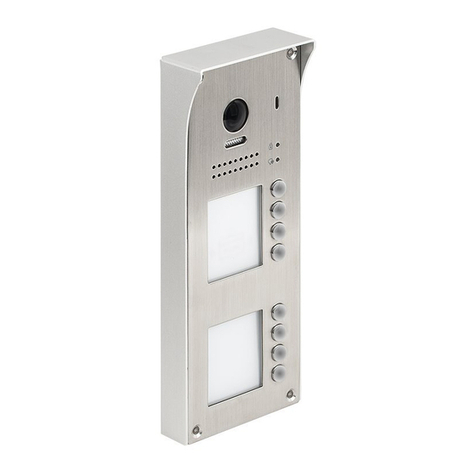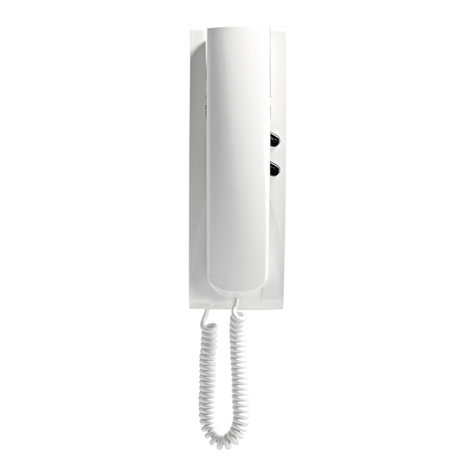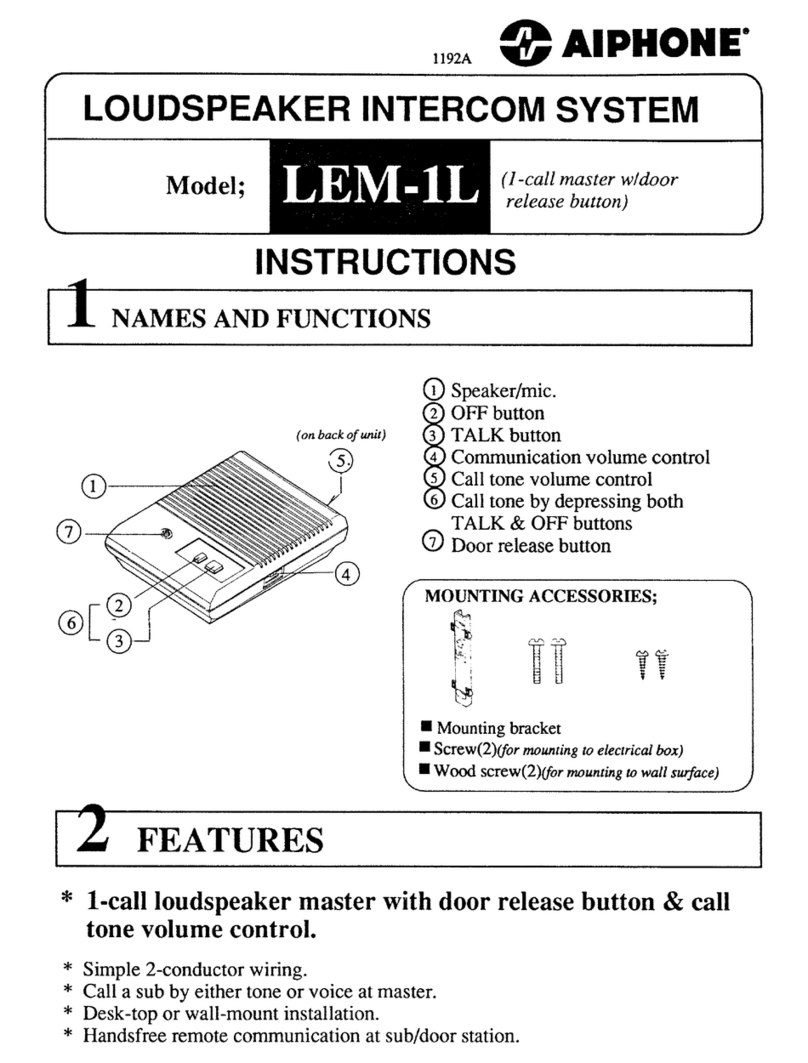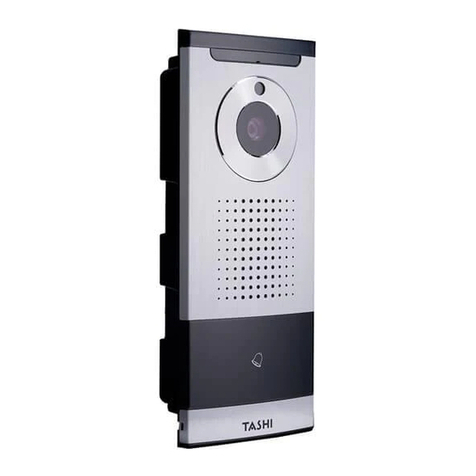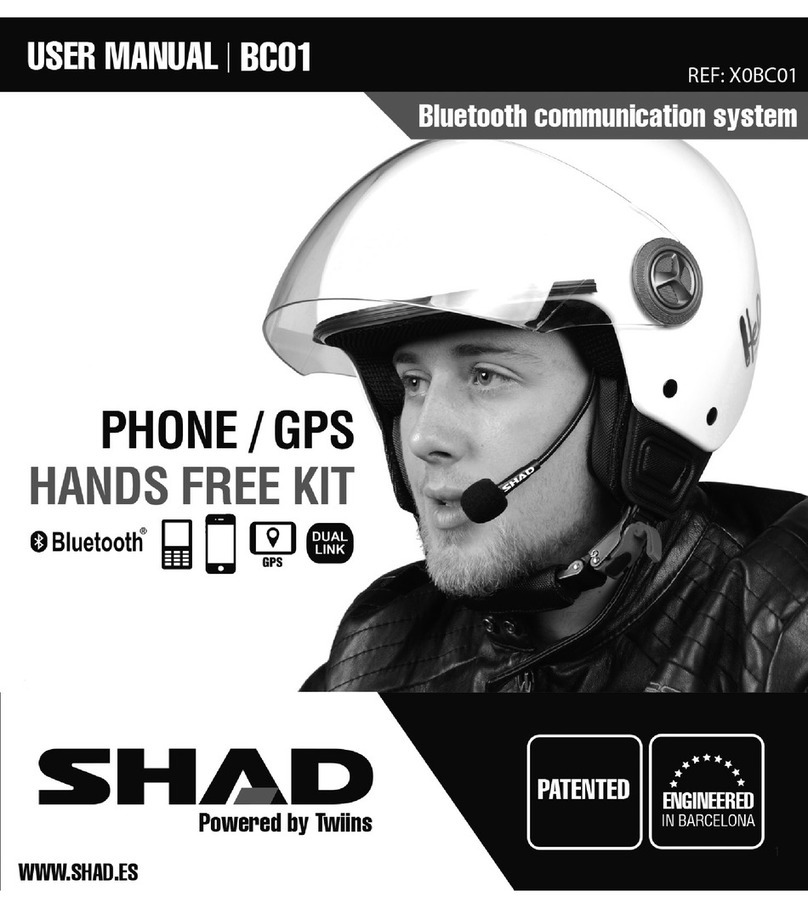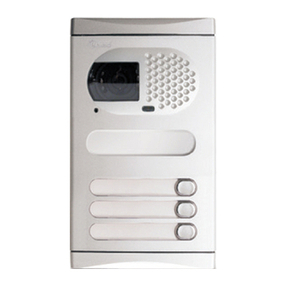Telex Audiocom IC-4M User manual

r
a
Telex
User Instructions
AUDIOCOM@
MODEL IC-4M
MASTER STATION
TELEX.
TELEX COMMUNICATIONS, INC. 9600 Aldrich Ave.
So.,
Minneapolis, MN 55420 U.S.A.
381 09-31
5
Rev
A
June
1991

GENERAL INFORMATION
GENERAL DESCRIPTION
The Telex Audiocom'" Model IC-4M is afour-
channel master intercom station designed for
balanced-line operation. Itfeatures light
signaling, stage announce (public address)
output, auxiliary program input, and IFB
operation. It is also compatiblewith the Telex
Model IC-4SX System Expander.
The IC-4M is equipped with an internalpower
supply capable of poweringupto 150remote
stations. It is rack-mountable insingle or dual
configurations.
OPERATING FEATURES
FRONT PANEL
The front panel has a 4-pin XLR connector for a
dynamic-microphone headset.A 3-pin connector
is also providedfor acondenser-type gooseneck
microphonewhich can be used with an external
speaker connected at the rear panel. Separate
volume controls are provided for headset and
speaker.A three-position rocker switch is used
for microphoneon/off switching and for call light
signaling. A momentary-type stage announce
volume control adjusts the auxiliary input level.A
3-pin XLR receptacle connector provides a
balanced, transformer-coupled stage announce
output. A 9-pin D-type connector provides
system buss connection for an IC-4SX System
Expander.
The IC-4M has an integral power cord for ac
operation, and the main power fuse is accessible
on the rear panel.
SPECIFICATIONS
Interface Requirements:
-
Dynamic Headset: 50-600 ohm microphone;
150-600ohm headphones
-
Condenser Microphone: 6.8K ohm, -55 dB
sensitivity (typical)
-Speaker: &ohm, 5W
-Auxiliary Program Source: 100mV-10 Vrms
-
Channel Level: 1Vrms (0 dB) nominal
-
Impedance: Supplies 300 ohms termination to
channel
Power Supply:
-
Output Voltage: 25V regulated
-Output Current: 500 mA maximum continuous
per channel; 2 amp maximum continuoustotal
push-button switch allows the station operator to
page or make public address announcements
Power Requirements:
120V, 50-60 Hz, 90W
maximum (may be modifiedfor 220V or 240V
through an exernal PA system. operation)
Channel select on/off push-button switches,
momentary-type push-button IFBswitches, and
call indicator lights are provided for each
channel. The channel-select switches indicate
the "on" state by displaying acolor bar. A rocker-
type power off/on switch is provided along with
an LEDto indicate "power on".
REAR PANEL
HeadphoneAmplifier:
-
MaximumOutput: 12V p-p into 150ohms (120
mW);21V p-p into 600 ohms (90 mW)
-Frequency Response (Channel to Phones):200
Hz-7 kHz
-
Voltage Gain (Channelto Phones): Adjustable
from 0-26 dB
-
Sidetone: Adjustable from 25 dB nullto full-on
Speaker Amplifier:
-
Maximum Output: 3W into 8ohms at 1%THD
A 1M-inch (6.35 mm) phone receptacle
-
Voltage Gain (Channelto Speaker): Adjustable
connector accepts an external speaker (8ohms
minimum).A 3-pin XLR connector and a from 0-34 dB
receptacleconnector for each intercom channel
permit loop-through connection of intercom
channels.
A 3-pin XLR receptacle connector accepts either
balanced or unbalanced, line-level auxiliary
program input. A rotary switch assignsthe
auxiliary program to one or all intercom channels
and also has an "off" position.An auxiliary
Auxiliary Amplifier:
-
Input Impedance: 50K ohms balanced; 25K
ohms unbalanced
-
Frequency Response (Auxiliaryto Channel):
150HZ-10kHz
-Voltage Gain (Auxiliaryto Channel):
Adjustable from 0-30 dB (measured before
onset of AGC limiting)
-
Common Mode Rejection: 40 dB

SPECIFICATIONS (CONT)
Connectors: Ambient TemperatureRange:
32"-122" F
-
Headset Input: One XLR-4M (0"-50"
C)
-
Condenser Mic: One 3-pin male
-
Auxiliary Input: One XLR-3F
Weight:
10Ibs 2 oz (4.6 kg)
-
StageAnnounce (PA Output): One XLR-3F
-
IntercomChannels: One XLR-3M and one
Dimensions:
3-1/2 inches (89 mm) high x
XLR-SF wired in parallel for each channel 8-1/4 inches (210 mm) wide x 11-1/4 inches
-
Speaker: One IN-inch (6.35 mm) phonejack (286 mm) deep
-Ac Power: One 6-foot (1.8 m) linecord with
3-pin U.S. grounding plug
Safety Approval:
UL
and CSA listed
DIMENSIONS
3-
(8
STAND-ALONE UNIT

STANDARD CONNECTOR USAGE
Connector Function
Monaural dynamic
headset or mic
Condensermicrophone
External power
source
Singlechannelintercom
Auxiliary input
Stage announce
Systembuss
Connector Type
XLR-4 or
equivalent
0
0
30
02
XLR-4M XLR-4F
0
Jones P-302-AB
or equivalent
XLR-3 or
ouivaleo
0
XLR-3M XLR-3F
XLR-3or
equ~valent
(-J
0
XLR-3F
XLR-3 or
equivalent
0
0
XLR-3F
9-p~n
D connector
54321
00000
.i
9876
Standard Usage
1
-
Mic shield
2
-
Mic hot
3
-
Headphonehot
4
-
Headphoneshield
1
-
Bias/Audio
2
-
Ground
3
-
Noconnection
Wide contact
-
Negative
Narrow contact
-
Positive
1
-
Dc return (Ground)
2
-
Intercom channel
3
-
lntercom channel
1
-
Ground
2
-
Balancedlnput
3
-
Balancedinput
1
-
Ground
2
-
Balancedoutput
3
-
Balancedoutput
1
-
Ground
2
-
Ground
3
-
25 Vdc
4
-
25 Vdc
5
-
Current sense
6
-
Channel
A
7
-
Channel B
8
-
Channel C
9
-
Channel
D
Comments
Do not connect the mic shield
and headphoneshield together.
24 Vdc nominal
12 Vdc minimum
30 Vdc maximum
Either intercom channel wire
may beconnected to either
connector contact
2
or 3.
(e*
GROUND
INPUT
INPUT
Balancedplug wiring
0
@
GROUND
GROUND INPUT
Unbalancedplug wiring
c+
GROUND
OUTPUT
OUTPUT
Balancedplugwiring
0
OUTPUT
0
GROUND
GROUND OUTPUT
Unbalancedplug wiring

REFERENCE
GUIDE
lspEAIR
out;ut
AUXILIARY CHANNELSELECT Switch
AUXILIARY VOLUME Control
Auxiliary INPUTConnector
DYNAMICHEADSETConnector
Power Cord
-HEADSET-
MainFuse
-
HEADSETVOLUME Control
-
SPEAKER OutputVOLUME Control
-
DirectorCHANNELSELECT Switches
-
CALL lndicator Lights
CHA
JNEL
INTERRUPT
Intercom
CHANNEL
Connectors
STAGEANNOUNCE Output
SYSTEM BUSS Connector (To IC-4SX)
VOLUME
SPEAKER
VOLUME
POWER Switch
and
lndicator Light
POWER
E
R
-
CONDENSER Mic Input
-MICA
4
4
+
4
IC-4M
[
-
INTERRUPT(IFB) Switches
-
STAGEANNOUNCE Button
-
CALUMIC Switch

OPERATION
SUPPLYING POWER USING THE CALL FEATURE
1.
Plugthe power cord intoawall outlet.
CALLING REMOTE STATIONS
2.
Turn the front panel main POWER switch on.
1.
Select the channel(s) to be called by setting
The yellow power indicator light abovethe the appropriate director CHANNEL SELECT
switch should illuminate. switch(es) to the "on" position.
USING THE AUXILIARY INPUT
1.
Plugthe auxiliary program source intothe
AUX INPUTconnector.
2.
Assign the auxiliary program source to the
desired channel(s) with the AUXILIARY
CHANNEL SELECT rotaryswitch.
3. Adjust the AUXILIARY VOLUME control for a
comfortable listening level at intercom
stations onthe selected channel(s).
VOICE COMMUNICATION
To communicate with remote intercom stations
on one or morechannels:
1.
Set the desiredfront panel director
CHANNEL SELECT push-button switch(es)
to the "on" position.
2.
Set the CALL/MIC switch to the ON position.
(To listen only, set this switch to OFF.)
3a. If using a headset, plug the headset into the
DYNAMIC HEADSETconnector, and adjust
the HEADSETVOLUME control for a
comfortable listening level. (SeeSidetone
Adjustment.)
3b. If using a condenser microphonetogether
with an external speaker, plugthe
microphoneintothe CONDENSER
connector, plugthe speaker into the rear
panel SPEAKER jack, and adjust the
SPEAKER VOLUME control for a comfortable
listening level.
2.
Press and holdthe CALL/MIC switch inthe
CALL position. The call indicator lightfor
each selected channel should illuminate.
Also, an inaudible
20
kHz signal is sent on
each selected channel to activate the call
indicator lights on any connected remote
stations.
3. When astation responds verbally, releasethe
call mic switch, and it will automatically
returnto the ON position for normal two-way
communication.
RECEIVING CALL SIGNALS
When a remote station calls the IC-4M, the
appropriate call indicator light will illuminate. To
respond, set the appropriate director CHANNEL
SELECT switch to the "on" position, and then
proceed with normal two-way communication.
USING THE INTERRUPT
(IFB) FEATURE
The INTERRUPTfold-back (IFB) switches are
used primarily for momentary-type
communications such as cueing on-the-air talent,
or for providing brief responsesto received call
signals. During interrupt, the auxiliary program
source is disconnected from all channels, and the
director is connected to the interruptedchannel.
To use this feature:
1.
Set the CALL/MIC switch to ON.
2.
Press and holdthe desired channel IFB
button while communicating.
3.
Releasethe IFB button when finished to
restore the auxiliary program and break the
momentary communication link.

OPERATION (CONT)
USING THE SIDETONE ADJUSTMENT
STAGE ANNOUNCE FEATURE
Sidetone refers to that portion of the director's
1. Connect the rear panel STAGE ANNOUNCE own voice signal which is heard inthe director's
output to the PA system. headset.The amount of sidetone is adjustable for
2.
Set the CALL/MIC switch to ON. each channelthrough small openingsinthe top
cover (labeled SIDETONE A through SIDETONE
3.
Pressand holdthe STAGE ANNOUNCE D).Adjustment may be made using asmall, flat-
button while speaking intothe microphone. bladescrewdriver.
SERVICE INFORMATION
FACTORY SERVICE
All Audiocom equipment returns must be sent
prepaid. Telex will not accept collect shipments.
The following information must accompany all
equipment returned for repair:
IN-WARRANTY RETURNS:
All equipment repaired in-warranty by Telex will
be returned prepaid by Telex.
If requested, an estimate will be sent before
repairing non-warranty equipment. This is a
guaranteed estimate -final charges will not
exceed what is quoted. If payment issent along
with your estimate approval, COD charges will be
avoided; otherwise, equipment will be returned to
you COD.
1. Your name, address and telephone number.
FACTORY SERVICE ADDRESS:
2. Purchaser's name and address (if different
from above).
3.
Copyof proofof purchase(keepyour original).
Service Department
Telex Communications, Inc.
1720 East 14th Street
Glencoe, Minnesota 55336 U.S.A.
4. Model and serial numbers (or date codes).
5.
A complete descriptionof the problem.
CUSTOMER ASSISTANCE
NON-WARRANTY RETURNS:
Customer Service Department
1. Your name, address and telephone number. Telex Communications, Inc.
9600 Aldrich Avenue South
2. Modeland serial numbers (or date codes). Minneapolis, Minnesota 55420 U.S.A.
Telephone: (612) 884-4051
3.
A complete description of the problem. (Collect calls not accepted)
Table of contents
Other Telex Intercom System manuals
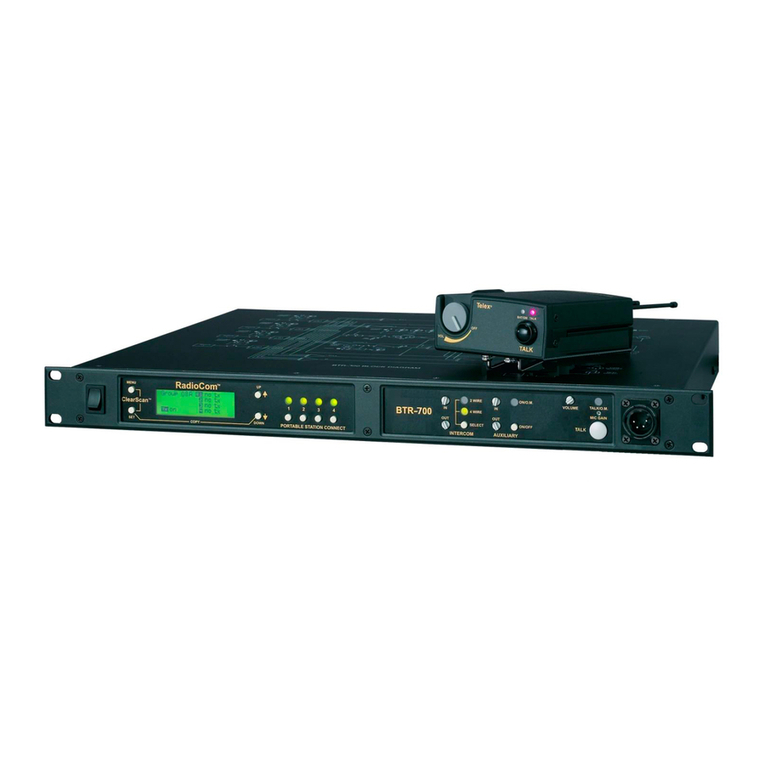
Telex
Telex RadioCom BTR-700 User manual
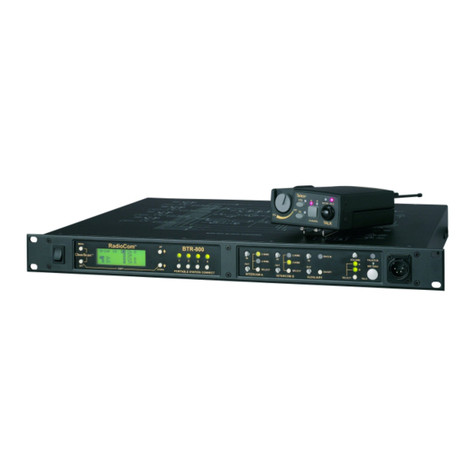
Telex
Telex RadioCom BTR-800 User manual

Telex
Telex EKP-632 User manual

Telex
Telex RADIOCOM TR-1 User manual

Telex
Telex IFB-1000 User manual
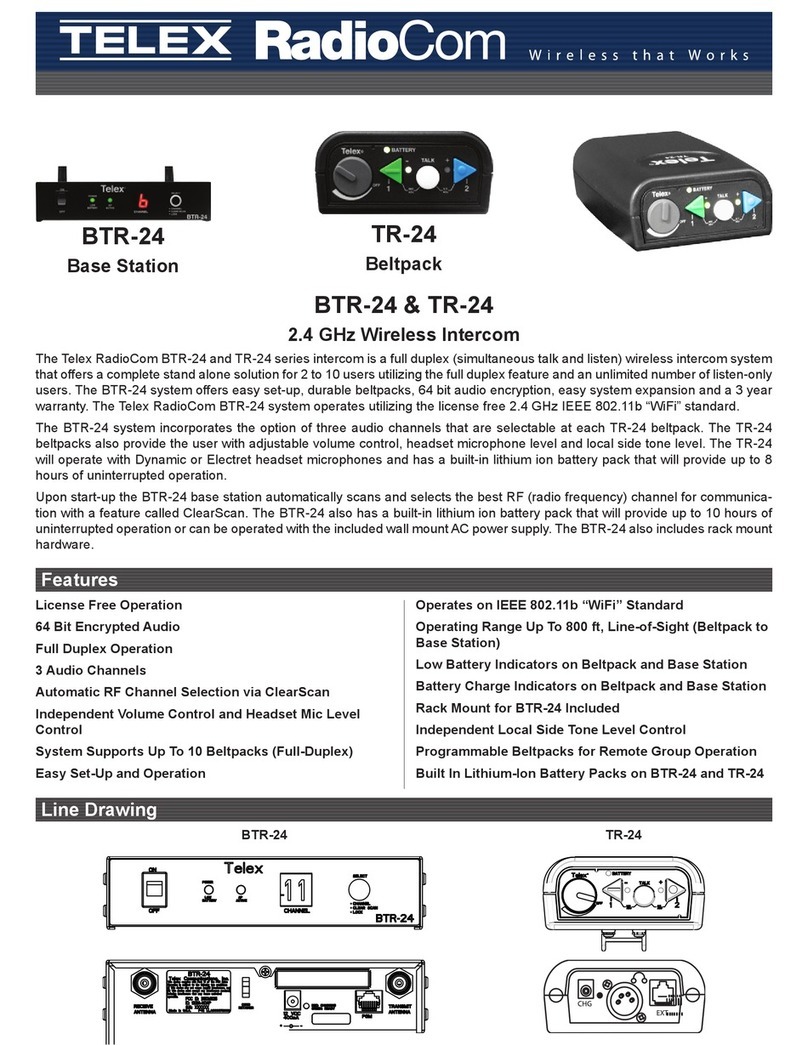
Telex
Telex BTR-24 User manual

Telex
Telex IC-S User manual

Telex
Telex BTR-24 User manual

Telex
Telex Audiocom IC-4M User manual
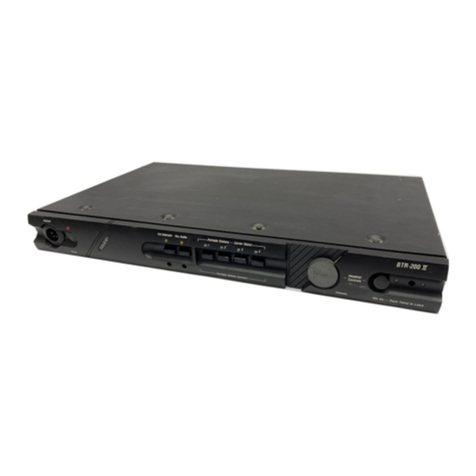
Telex
Telex Radiocom BTR-200 Series User manual
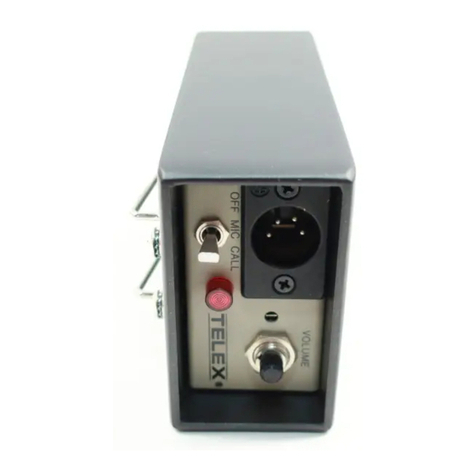
Telex
Telex IC-1 User manual
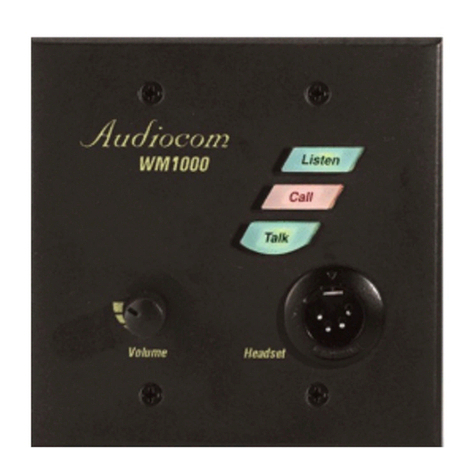
Telex
Telex Audiocom WM1000 User manual
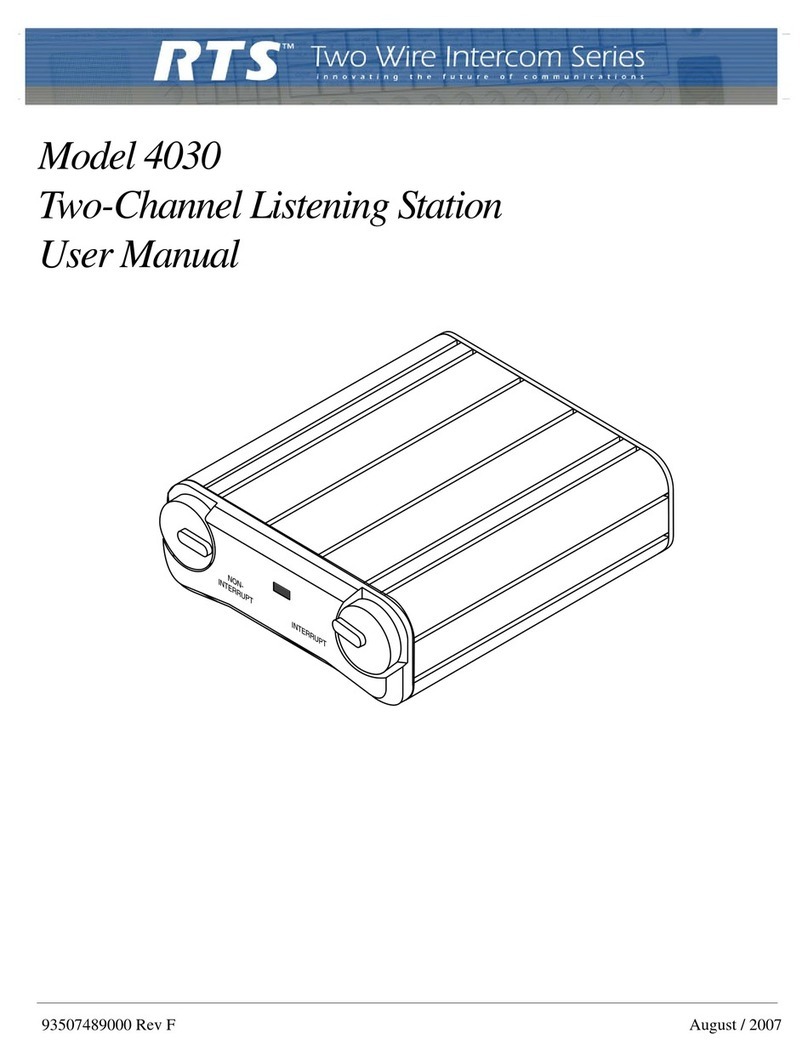
Telex
Telex 4030 User manual

Telex
Telex BP-2000 User manual
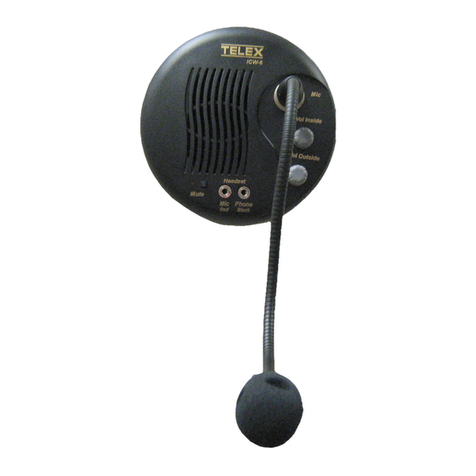
Telex
Telex ICW-6 User manual
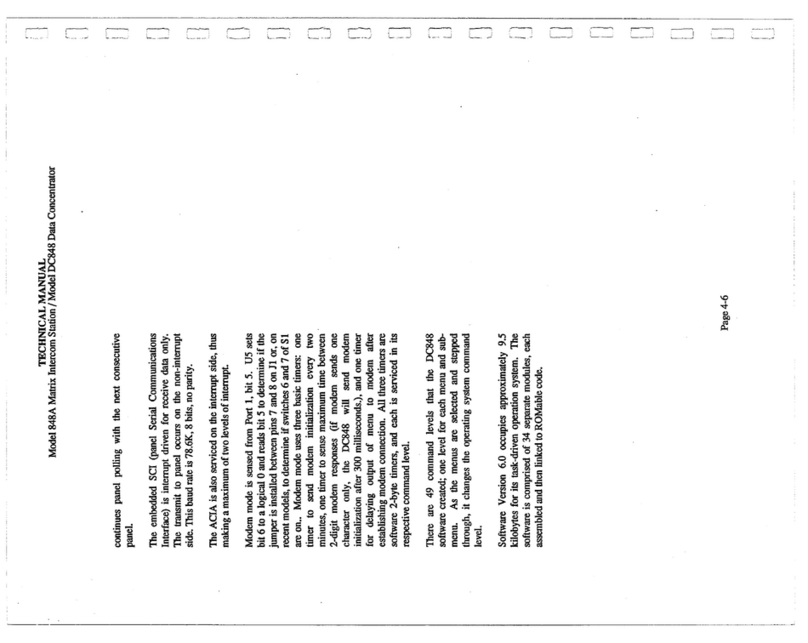
Telex
Telex 848A User manual

Telex
Telex RadioCom BTR-800 User manual
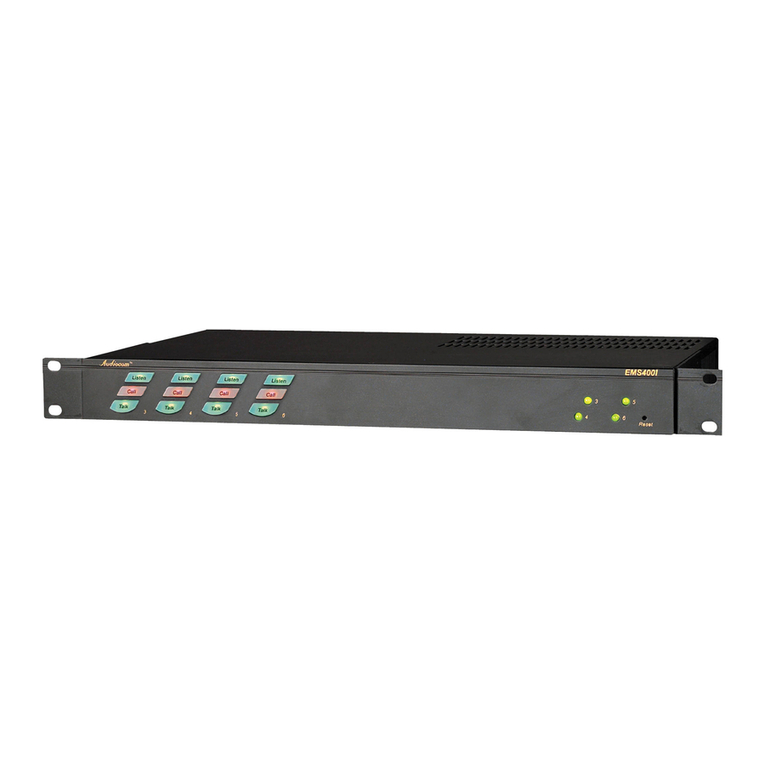
Telex
Telex Audiocom EMS-4001 User manual
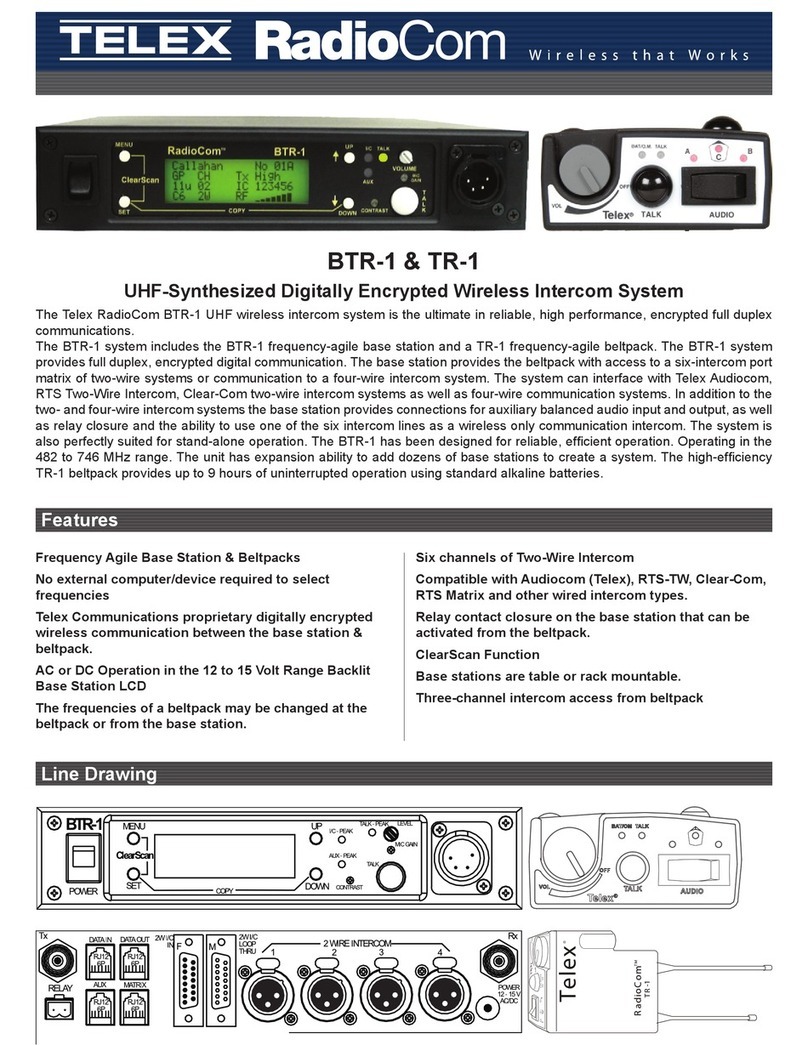
Telex
Telex RADIOCOM BTR-1 User manual
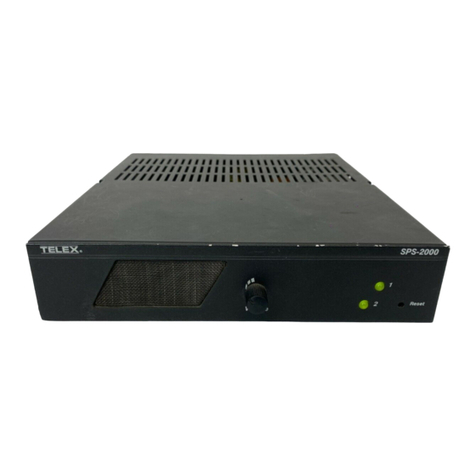
Telex
Telex Audiocom SPS-2000 User manual


